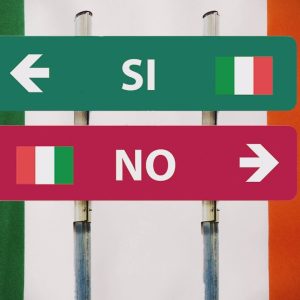On 27 January 1861, Italians participated in their first parliamentary election as a unified nation approached reality. This significant event marked a major step in the Risorgimento, the movement to unify the fragmented states of the Italian peninsula under one nation.
The first parliamentary election paved the way for a parliament to be in place by March, when Victor Emmanuel II of Sardinia would be proclaimed the first King of Italy.
The new parliament, consisting of 443 deputies from 59 provinces, convened in Turin, which served as the capital since Rome remained under Papal control until 1870. Representation varied by region, with smaller provinces like Benevento electing one deputy, while major cities like Turin, Milan, and Naples elected up to 19.
However, the electorate was limited. Of Italy’s 22 million people, only 418,696 men met the strict eligibility criteria set by the Kingdom of Sardinia’s electoral laws. To vote, one had to be male, at least 25 years old, literate, and a taxpayer contributing at least 40 lire annually. Women were excluded entirely and did not gain full voting rights in Italy until 1945.
The election process involved two rounds, with the first vote held on 27 January and a second round on 3 February in constituencies where no candidate achieved over 50% of the vote or a third of the registered electorate. Despite this historic milestone, voter turnout was dismal. Of those eligible, only 239,583 cast their ballots, and 10,000 votes were declared invalid, leaving the first parliament effectively decided by just over 1% of the population.
The Catholic Church’s stance further suppressed participation, as Pope Pius IX instructed Catholics to boycott the election.
The Political Landscape
The candidates were not affiliated with political parties in the modern sense but represented loose ideological blocs. The Destra Storica (Historical Right), led by Count Camillo Benso di Cavour, dominated the election. A seasoned statesman and former prime minister of Sardinia, Cavour had been instrumental in the unification movement and commanded 46.1% of the vote.
Opposing the Right was the Sinistra Storica (Historical Left), a liberal-centrist bloc led by Urbano Rattazzi, which garnered 20.4% of the vote.
A smaller but notable faction was the Historical Far Left or Partito d’Azione (Action Party), led by revolutionary Giuseppe Mazzini and aligned with military hero Giuseppe Garibaldi. Both were central figures in the Risorgimento, albeit with different approaches. While Cavour championed pragmatic diplomacy and constitutional monarchy, Mazzini envisioned a republican Italy. However, the Far Left struggled to gain traction, securing only 2.3% of the vote, reflecting the conservative nature of the limited electorate.
The Birth of a Nation
On 4 March 1861, the new parliament convened in Turin, and 13 days later, it formally declared the Kingdom of Italy, confirming Victor Emmanuel II as its first monarch. The decision to retain “Victor Emmanuel II” as the king’s title, honouring his Sardinian lineage, stirred controversy among factions who viewed it as prioritising the House of Savoy over the new Italian state.
Count Cavour, appointed Italy’s first prime minister, faced immediate challenges. Chief among them was the effort to bring Rome and Venice into the kingdom to achieve full unification. Sadly, his tenure was tragically short. After just 75 days in office, Cavour succumbed to malaria, dying at the age of 50.
The first parliamentary election of 1861 was a pivotal chapter in Italy’s unification, laying the foundation for a new nation. Italy adopted the national anthem ‘Fratelli d’Italia’, written by Risorgimento and Mazzini follower, Goffredo Mameli.





